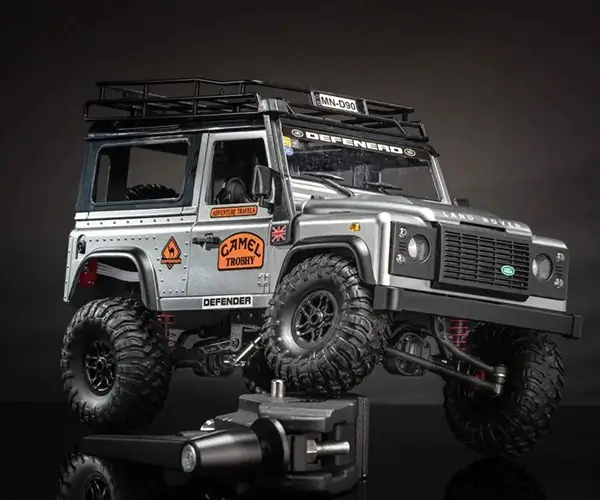Imagine a world where your ideas leap off the paper—or screen—and come vividly to life. Whether you’re a novice tinkering in your garage or a seasoned engineer designing advanced robotics, servo motors are often the magic ingredients that power motion and precision. When paired with an Arduino microcontroller—a popular and versatile platform—the possibilities multiply exponentially.

What Is a Servo Motor?
At its core, a servo motor is a compact rotary actuator capable of precise control of angular position. Unlike simple motors that run continuously, servo motors are equipped with integrated feedback mechanisms that allow them to reach and hold a specific position within a waveform or a mechanical arrangement. This characteristic makes them ideal for tasks that require meticulous control, such as robotic arms, camera gimbals, or automated mechanisms.
Types of Servo Motors Suitable for Arduino Projects
While there are many kinds of servo motors, the most common in Arduino projects are the small, brushed DC servo motors. These are usually consumer-grade, hobbyist-friendly, and operate on a standard 4.8V to 6V power supply. They are often found in hobby shops, online marketplaces, and electronics stores.
Moreover, there are digital servo motors, which incorporate microprocessors to improve accuracy, speed, and reliability—great options for more advanced projects. Then there are continuous rotation servos, which can turn 360 degrees, adding another layer of functionality for specific applications, like wheeled robots.
How Does a Servo Motor Work?
Understanding the internal workings of a servo motor illuminates why it’s such a powerful tool for precise control. The core component inside is a small DC motor connected to a gear train, which converts the high-speed rotation into high torque at a lower speed. The heart of the servo is a potentiometer (a variable resistor) connected to the output shaft, providing a real-time feedback signal to the gear assembly.
The control system—driven by pulse-width modulation (PWM) signals—tells the servo how far to turn. Essentially, the Arduino sends a PWM signal consisting of a pulse of a certain width (usually between 1 ms and 2 ms), which the servo interprets as a command to rotate to a particular position or to spin continuously.
Why Use a Servo Motor with Arduino?
The combination of Arduino and servo motors is almost unbeatable for interactive projects. Arduino’s simplicity and versatility pair nicely with the servo’s precise movement. From beginner projects like controlling a robotic arm to complex mechanisms like automated windows or camera sliders, servo motors give tangible, controlled movement—making your dreams a reality.
Plus, servos are widely accessible and inexpensive, making them an excellent starting point for anyone eager to explore robotics and automation. Their ease of use, combined with the abundant tutorials and community support available online, furthers their appeal.
Getting Started: Basic Components Needed
An Arduino board (Uno, Mega, Nano, etc.) A servo motor (standard hobby servo) A power supply (battery or wall adapter suitable for your servo) Jumper wires A breadboard (optional, for organizing connections) Push buttons or sensors (for interactive control, if desired)
Connecting Your Servo to Arduino
The typical servo has three wires:
Power (usually red) Ground (usually black or brown) Signal (usually yellow, white, or orange)
Connect the power wire to the 5V pin on Arduino, ground wire to GND, and the signal wire to one of the digital PWM pins (like pin 9). It’s generally recommended to power the servo separately if it draws more current, to prevent voltage drops or resets in your Arduino.
Programming the Servo in Arduino IDE
Arduino provides a dedicated library called Servo.h that simplifies controlling servos. With just a few lines of code, you can make the servo rotate to a specified position or sweep back and forth.
Sample code snippet:
#include Servo myServo; void setup() { myServo.attach(9); // Attach servo to pin 9 } void loop() { myServo.write(0); // Move to 0 degrees delay(1000); myServo.write(90); // Move to 90 degrees delay(1000); myServo.write(180); // Move to 180 degrees delay(1000); }
This simple sketch demonstrates the servo’s movement between three positions, giving you a foundation for more complex projects.
Understanding the PWM Signals
PWM signals control servo motion by varying the pulse width:
A 1 ms pulse (~5% duty cycle at 20 ms period) corresponds to 0 degrees. A 1.5 ms pulse (~7.5%) corresponds to 90 degrees. A 2 ms pulse (~10%) corresponds to 180 degrees.
The Servo.h library handles this conversion internally, but it’s helpful to know the underlying principle to troubleshoot and customize your projects.
Scaling Up: Controlling Multiple Servos
Most Arduino boards can control multiple servos simultaneously. However, powering several servos from the Arduino’s 5V pin may cause voltage drops; thus, an external power supply is recommended. For projects with many servos, consider using a dedicated servo controller board, like the PCA9685, which can control up to 16 servos via I2C communication.
Practical Applications of Servo Motors with Arduino
Robotics: Articulated robotic arms, walking robots, or hexapods Automation: Opening/closing doors, adjusting vents Photography: Camera gimbals, sliders, or pan-and-tilt mechanisms Art Installations: Interactive sculptures and kinetic art Educational Projects: Demonstrations of physics or programming concepts
Leveraging innovations in modular drive technology, Kpower integrates high-performance motors, precision reducers, and multi-protocol control systems to provide efficient and customized smart drive system solutions.




































